Trade names Quinaglute, Quinidex Routes ofadministration Oral, IM, IV Molar mass 324.417 g/mol | AHFS/Drugs.com Monograph ATC code C01BA01 (WHO) CAS ID 56-54-2 | |
 | ||
Pregnancycategory AU: CUS: C (Risk not ruled out) Legal status AU: S4 (Prescription only)CA: ℞-onlyUK: POM (Prescription only)US: ℞-only | ||
85 quinidine or lidocaine
Quinidine is a pharmaceutical agent that acts as a class I antiarrhythmic agent (Ia) in the heart. It is a stereoisomer of quinine, originally derived from the bark of the cinchona tree. The drug causes increased action potential duration, as well as a prolonged QT interval.
Contents
- 85 quinidine or lidocaine
- Mechanism
- History
- Elimination
- Side effects
- Other uses
- Veterinary Usage
- References

Mechanism
Like all other class I antiarrhythmic agents, quinidine primarily works by blocking the fast inward sodium current (INa). Quinidine's effect on INa is known as a 'use dependent block'. This means at higher heart rates, the block increases, while at lower heart rates, the block decreases. The effect of blocking the fast inward sodium current causes the phase 0 depolarization of the cardiac action potential to decrease (decreased Vmax).
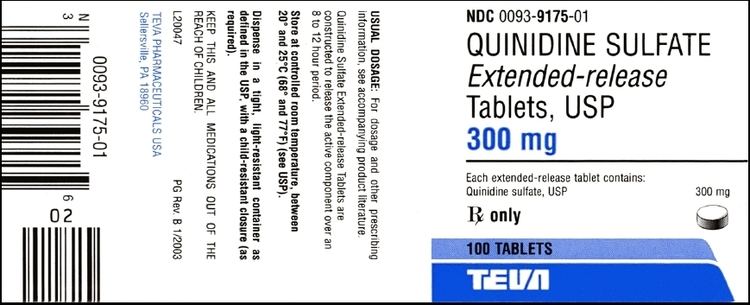
Quinidine also blocks the slowly inactivating, tetrodotoxin-sensitive Na current, the slow inward calcium current (ICa), the rapid (IKr) and slow (IKs) components of the delayed potassium rectifier current, the inward potassium rectifier current (IKI), the ATP-sensitive potassium channel (IKATP) and Ito.

At micromolar concentrations, quinidine inhibits Na+/K+-ATPase by binding to the same receptor sites as the digitalis glycosides such as ouabain.
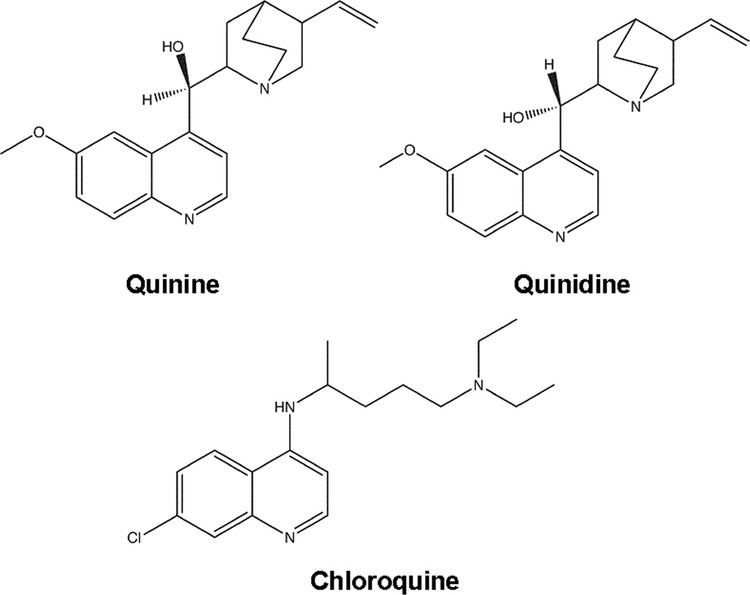
The effect of quinidine on the ion channels is to prolong the cardiac action potential, thereby prolonging the QT interval on the surface ECG.
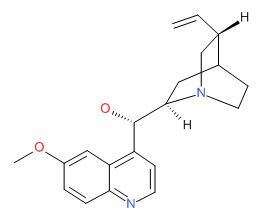
Other ECG effects include a wide notched P wave, wide QRS complex, depressed ST segment, and U waves. These are the results of both slowed depolarization and repolarization.
History
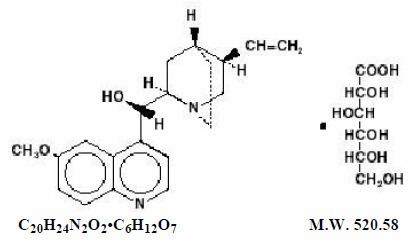
The effects of cinchona bark (the botanical source from which quinidine is extracted) had been commented on long before the understanding of cardiac physiology arose. Jean-Baptiste de Sénac, in his 1749 work on the anatomy, function, and diseases of the heart, had this to say,
"Long and rebellious palpitations have ceded to this febrifuge".
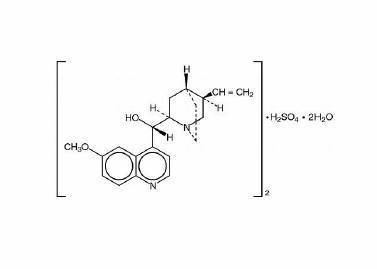
"Of all the stomachic remedies, the one whose effects have appeared to me the most constant and the most prompt in many cases is quinquina [Peruvian bark] mixed with a little rhubarb."
Sénac subsequently became physician to Louis XV of France, a counselor of the state, and superintendent of the mineral waters and medicinals in France. As a result of his influence, throughout the 19th century, quinine was used to augment digitalis therapy. It was described as das Opium des Herzens (the opium of the heart).
However, the use of quinidine to treat arrhythmia really only came into its own because a physician listened to the astute observation of one of his patients. In 1912, Karel Frederik Wenckebach saw a man with atrial fibrillation. He was a Dutch merchant, used to good order in his affairs. He would like to have good order in his heart business, also, and asked, "why there were heart specialists if they could not abolish this very disagreeable phenomenon ... he knew himself how to get rid of his attacks. As I did not believe him, he promised to come back next morning with a regular pulse, and he did."
The man had found by chance that when he took one gram of quinine during an attack, it reliably halted it in 25 minutes; otherwise it would last for two to 14 days. Wenckebach often tried quinine again, but he succeeded in only one other patient.
He made passing mention of it in his book on cardiac arrhythmias published in 1914. Four years later, Walter von Frey of Berlin reported in a leading Viennese medical journal that quinidine was the most effective of the four principal cinchona alkaloids in controlling atrial arrhythmias.
Elimination
The half life of oral quinidine is six to eight hours, and it is eliminated by the cytochrome P450 system in the liver. About 20% is excreted unchanged via the kidneys.
Side effects
Quinidine is also an inhibitor of the cytochrome P450 enzyme 2D6, and can lead to increased blood levels of lidocaine, beta blockers, opioids, and some antidepressants. Quinidine also inhibits the transport protein P-glycoprotein and so can cause some peripherally acting drugs such as loperamide to have central nervous system side effects, such as respiratory depression, if the two drugs are coadministered.
Quinidine can cause thrombocytopenia, granulomatous hepatitis, myasthenia gravis, and torsades de pointes, so is not used much today. Torsades can occur after the first dose. Quinidine-induced thrombocytopenia (low platelet count) is mediated by the immune system, and may lead to thrombocytic purpura.
Quinidine intoxication can lead to a collection of symptoms collectively known as cinchonism, with tinnitus (ringing in the ears) being among the most characteristic and common symptoms of this toxicity syndrome. Quinidine toxicity can also invoke episodes of Torsades de Pointes - a rapid and dangerous ventricular rhythm.
Other uses
A combination of dextromethorphan and quinidine has been shown to alleviate symptoms of easy laughing and crying (pseudobulbar affect) in patients with amyotrophic lateral sclerosis and multiple sclerosis. This drug is marketed as Nuedexta in the United States.
Intravenous quinidine is also indicated for treatment of Plasmodium falciparum malaria. However, quinidine is not considered the first-line therapy for P. falciparum. The recommended treatments for P. falciparum malaria, according to the Toronto Notes 2008, are a combination of either quinine and doxycycline or atovaquone and proguanil (Malarone).
Quinidine sulfate is used in the treatment of atrial fibrillation in horses.
Quinidine-based ligands are used in AD-mix-β for Sharpless asymmetric dihydroxylation.
Veterinary Usage
The drug is also effective for the treatment of atrial fibrillation in horses.
